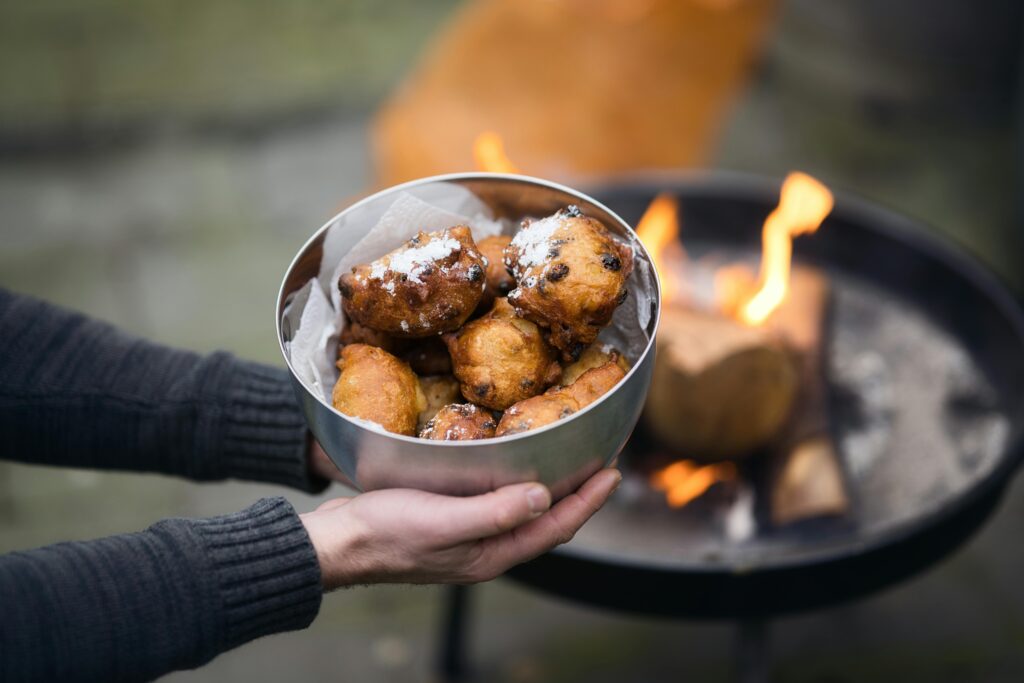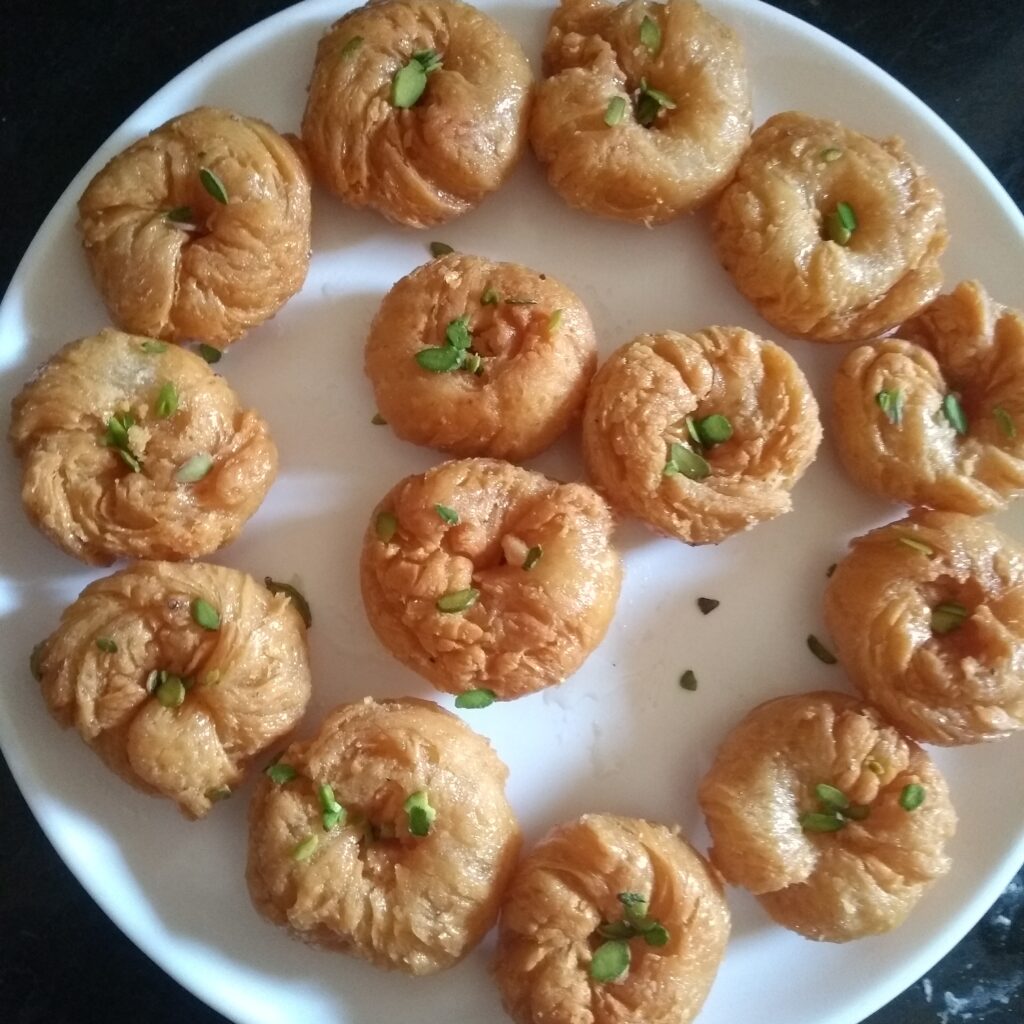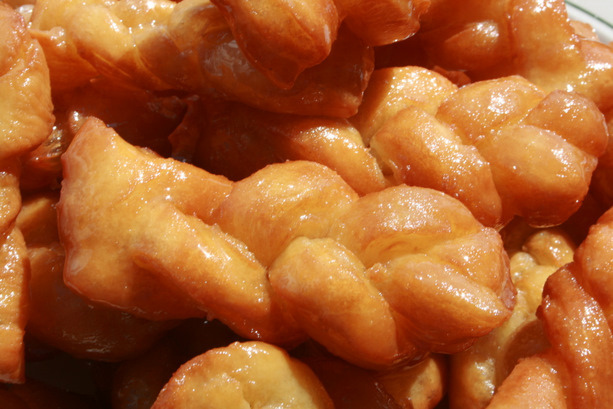Exploring Global Variations of Doughnuts

No doughnut journey would be complete without starting in America, where the doughnut has become an iconic treat. The classic American doughnut is typically a ring-shaped, yeast-leavened pastry, often adorned with a sugary glaze or sprinkles. With a history steeped in Dutch settlers’ traditions, these doughnuts have evolved into a staple of American breakfasts and coffee breaks. Beyond the classic glazed variant, American doughnuts come in a plethora of flavors and styles, ranging from filled and frosted to cake and old-fashioned varieties, each offering a unique taste experience.
The doughnut’s rise to prominence in America can be attributed to its widespread availability and the creativity of American bakers. From the bustling streets of New York City to the cozy diners of the Midwest, doughnuts have carved out a special place in American culture. National Doughnut Day, celebrated every first Friday of June, is a testament to their enduring popularity. This day not only highlights the doughnut’s sweet allure but also honors its historical significance, as it was originally established to commemorate the Salvation Army volunteers who provided doughnuts to soldiers during World War I.

The French Beignet
Cross the Atlantic to France, and you’ll find the elegant beignet—a square or rectangular doughnut, deep-fried to golden perfection and generously dusted with powdered sugar. Beignets hold a special place in French cuisine and are particularly famous in New Orleans, where they are a must-have treat in the French Quarter, often served with a steaming cup of café au lait. The rich history of beignets in New Orleans is intertwined with the city’s vibrant culture, making them a beloved symbol of Southern hospitality and indulgence.

In France, beignets are often enjoyed during festive occasions and are a staple in the country’s culinary traditions. They can be found in a variety of forms, including fruit-filled variations that add a burst of flavor to the classic recipe. The simplicity of the beignet’s ingredients—flour, eggs, butter, and milk—belies the complexity of its flavor, making it a timeless treat that continues to win hearts across generations. Whether savored in a bustling café or made at home, beignets offer a taste of France’s rich culinary heritage with every bite.
Dutch Oliebollen
In the Netherlands, oliebollen (literally “oil balls”) are a festive favorite, especially around New Year’s Eve. These doughnuts are made from a rich, yeast-based dough mixed with raisins or currants. Once deep-fried, oliebollen are dusted with powdered sugar. Their crispy exterior and fluffy interior make them a comforting, sweet delight. Dutch families often gather to prepare oliebollen together, turning the process into a cherished tradition that marks the end of the year with joy and togetherness.
Oliebollen’s history dates back to medieval times, where they were considered a symbol of prosperity and good fortune. Today, they are synonymous with New Year’s celebrations, often enjoyed while watching fireworks or celebrating with loved ones. Street vendors and home kitchens alike buzz with activity as oliebollen are prepared fresh, the aroma filling the air with anticipation for the year ahead. The addition of ingredients like apple chunks or citrus zest can add a delightful twist, making each batch a unique creation.

India’s Balushahi
Traveling to India, you’ll encounter balushahi, a doughnut-like dessert that boasts a unique, flaky texture. Made from a dough of all-purpose flour and yogurt, balushahi is deep-fried slowly and then soaked in sugar syrup to give it a sweet, slightly tangy flavor. Often garnished with nuts or cardamom, balushahi is a popular treat at Indian weddings and festivals. Its preparation is considered an art form, with skilled hands crafting each piece to perfection, ensuring a delicate balance of flavors and textures.
Balushahi’s rich history is rooted in Indian culinary traditions, where it is often associated with celebrations and special occasions. It is a testament to the intricate flavors and techniques that define Indian desserts, with each region adding its unique touch to the recipe. Whether enjoyed as part of a festive feast or as a simple indulgence with tea, balushahi offers a taste of India’s vibrant culinary tapestry, inviting all who try it to savor its sweet complexity.

South Africa’s Koeksisters
In South Africa, koeksisters are a beloved sweet treat with a twist—literally. These braided doughnuts are deep-fried and then immediately dipped in an ice-cold sugar syrup, which gives them a glossy, sticky exterior. The combination of crispy dough and sweet syrup creates an irresistible texture and flavor. Koeksisters are a staple at South African gatherings and are often enjoyed with a cup of tea, bringing people together in a shared moment of delight.
The origins of koeksisters are steeped in South African history, reflecting the diverse cultural influences that have shaped the nation’s cuisine. They are often associated with Sunday morning treats and are a favorite at family gatherings, where their preparation becomes a communal activity. The art of making koeksisters involves a delicate balance of frying and soaking, ensuring they remain crisp yet succulent. This traditional delicacy continues to capture the hearts of those who taste it, offering a sweet reminder of South Africa’s rich heritage.

Japan’s Mochi Doughnuts
Japanese cuisine, known for its innovation, brings us mochi doughnuts. These chewy delights are made from glutinous rice flour, giving them a unique texture that’s distinctly different from traditional wheat-based doughnuts. Mochi doughnuts are often glazed with matcha, black sesame, or chocolate, and they offer a delightful chewiness that sets them apart. Their popularity has surged in recent years, both in Japan and internationally, as people seek out new and exciting culinary experiences.
The appeal of mochi doughnuts lies in their versatility and the way they seamlessly blend traditional Japanese ingredients with contemporary flavors. They are a testament to Japan’s culinary creativity, where the art of presentation is as important as taste. Mochi doughnuts can be found in various shapes and sizes, each one a work of art that invites you to explore its intricate textures and flavors. Whether enjoyed as a midday snack or a special treat, mochi doughnuts offer a taste of Japan’s innovative spirit in every bite.

Mexican Churros
While churros might not be ring-shaped, they are indeed a beloved member of the doughnut family. Originating from Spain but now a staple in Mexican cuisine, churros are long, ridged sticks of dough, deep-fried until crispy. They are usually rolled in cinnamon sugar and often served with a side of chocolate sauce for dipping, making them an irresistible dessert or snack. The combination of crunchy exterior and soft interior creates a delightful contrast that has made churros a favorite treat worldwide.
In Mexico, churros are often enjoyed as a breakfast indulgence or a late-night snack, accompanied by a rich, thick hot chocolate. Street vendors and cafés serve them fresh, offering a warm and comforting treat that is hard to resist. The tradition of making churros is passed down through generations, with each family adding its personal touch to the recipe. As a symbol of togetherness and festivity, churros continue to bring joy and satisfaction to those who savor their sweet simplicity.

Italian Zeppole
In Italy, zeppole are a traditional treat that can vary by region. These small, round doughnuts are made from a simple dough of flour, eggs, and ricotta cheese, which creates a light and airy texture. Zeppole are often dusted with powdered sugar and filled with custard or jam. They are especially popular during the Feast of Saint Joseph, celebrated in March. The celebration often includes a variety of zeppole, each one crafted with care and devotion to honor the occasion.
The history of zeppole is deeply intertwined with Italian culture, where they are enjoyed as a symbol of good fortune and celebration. Each region of Italy boasts its unique variation, with ingredients and fillings that reflect local tastes and traditions. Whether served plain or filled, zeppole offer a taste of Italy’s rich culinary heritage, inviting those who try them to partake in a tradition that has been cherished for generations. Their presence at festive gatherings adds a sweet touch to the celebrations, making them an enduring favorite across the country.

Germany’s Berliner
In Germany, the berliner is a popular doughnut without a hole. Also known as Pfannkuchen in Berlin, these round pastries are typically filled with jam or custard and sprinkled with sugar. Berliners are a festive treat, especially around New Year’s Eve and at carnivals. Their rich, sweet filling and tender dough make them a beloved indulgence, enjoyed by people of all ages.
Berliners’ history is rich with cultural significance, and they are often associated with celebrations and joyous occasions. During carnival season, they are a staple treat, adding a touch of sweetness to the festivities. The variety of fillings—from traditional fruit jams to chocolate and vanilla custards—offers something for every palate, making Berliners a versatile and satisfying treat. As a symbol of German culinary creativity, Berliners continue to delight those who savor their sweet and fluffy goodness.

Conclusion: A World of Doughnut Delights
From the flaky balushahi of India to the chewy mochi doughnuts of Japan, doughnuts around the world offer a tantalizing array of flavors and textures. Each variation tells a story of cultural tradition and culinary creativity, inviting us to savor the global diversity of this beloved treat. Whether you’re a marketing manager looking to captivate an audience with unique content or a wedding planner seeking a food truck with a wow factor, these international doughnut delights are sure to inspire and satisfy. So, the next time you indulge in a doughnut, remember the rich tapestry of global influences that make each bite a delicious journey.
Doughnuts serve as a reminder of how food can bridge cultural divides and bring people together through shared enjoyment. As we explore the world through these delightful pastries, we gain a deeper appreciation for the artistry and tradition that goes into each creation. Whether enjoyed in a bustling city café or a quiet family kitchen, doughnuts continue to captivate our senses and bring joy to our lives. So, embark on your own doughnut adventure, and discover the diverse and delicious world of doughnuts that awaits you.
